George H. W. Bush, Forty-First President of the United States
Ronald Martinez / Stringer / Getty Images
- U.S. Presidents
- Important Historical Figures
- Native American History
- American Revolution
- America Moves Westward
- The Gilded Age
- Crimes & Disasters
- The Most Important Inventions of the Industrial Revolution
- African American History
- African History
- Ancient History and Culture
- Asian History
- European History
- Latin American History
- Medieval & Renaissance History
- Military History
- The 20th Century
- Women's History
- M.A., History, University of Florida
- B.A., History, University of Florida
George Herbert Walker Bush (1924-2018) was the 41st President of the United States. He was born on June 12, 1924, in Milton, Massachusetts. He was an oil businessman and politician who served as Texas Congressman, Ambassador to the United Nations, CIA director, Vice President, and as the 41st President of the United States. He died on November 30, 2018, at the age of 94.

Fast Facts: George H.W. Bush
- Known For : 41st president of the U.S., enlisted in World War II at the age of 18 and became the youngest aviator at the time, founded his own oil company in Texas and became a millionaire by the age of 40, U.S. congressman from Texas’ 7th District from 1967 to 1971, Ambassador to the United Nations, and director of the Central Intelligence Agency.
- Born : June 12, 1924
- Died: November 30, 2018
- Term in Office : January 20, 1989 - January 20, 1993
- Education : Graduated from Yale University with a degree in economics
- Spouse : Barbara Bush (nee Pierce)
- Children : George W. Bush , 43rd President of the U.S.; Pauline Robinson (Robin) who died at age three; John F. "Jeb" Bush, Governor of Florida (1999-2007); Neil M. Bush; Marvin P. Bush; and Dorothy W. "Doro" Bush
Family Ties and Marriage
George H. W. Bush was born to Prescott S. Bush, a wealthy businessman and Senator, and Dorothy Walker Bush. He had three brothers, Prescott Bush, Jonathan Bush, and William "Buck" Bush and one sister, Nancy Ellis.
On January 6, 1945, Bush married Barbara Pierce . They had been engaged before he went off to serve in World War II. When he returned from the war in late 1944, Barbara dropped out of Smith College. They were married two weeks after his return. Together, they had four sons and two daughters: George W . (43rd President of the U.S.), Pauline Robinson (who died at age three), John F. "Jeb" Bush (former governor of Florida), Neil M. Bush, Marvin P. Bush, and Dorothy W. "Doro" Bush. At the time of Barbara’s death on April 17, 2018, she and George H. W. had been married for 73 years, making them the longest-married presidential couple in U.S. history.
Of his beloved Barbara, Bush once wrote: “I have climbed perhaps the highest mountain in the world, but even that cannot hold a candle to being Barbara's husband.”
George Bush's Military Service
Before going to college, Bush signed up to join the navy and fight in World War II. He rose to the level of lieutenant. He was a navy pilot, flying 58 combat missions in the Pacific. He was injured bailing out of his burning aircraft during a mission and was rescued by a submarine.
Life and Career Before the Presidency
Bush came from a wealthy family and attended private schools. After high school, he joined the Navy to fight in World War II before going to Yale University. He graduated from Yale with honors in 1948, earning a degree in economics.
Bush began his career right out of college working in the oil industry in Texas and created a lucrative career for himself. He became active in the Republican Party. In 1967, he won a seat in the U.S. House of Representatives. In 1971, he was U.S. ambassador to the United Nations. He served as the chairman of the Republican National Committee (1973-74). He was the chief liaison to China under President Ford. From 1976 to 1977, he served as the director of the CIA. From 1981 to 1989, he served as Vice President under Reagan.
Becoming the President
Bush gained the nomination in 1988 to run for president and chose Dan Quayle to run as his vice president . He was opposed by Democrat Michael Dukakis. The campaign was extremely negative and centered around attacks instead of plans for the future. Bush won with 54 percent of the popular vote and 426 out of 537 electoral votes.
George Bush’s Presidency
Much of George Bush's attention was focused on foreign policies.
- Invasion of Panama (1989): Codenamed Operation Just Cause, the invasion was the result of continuing dissatisfaction with the actions of general and dictator Manuel Noriega. His side lost the election but refused to step down. Because of U.S. interests in the canal zone and Noriega’s shifting allegiance to the Soviet Union, Bush sent troops into Panama to depose General Manuel Noriega in December 1989. Noriega was heavily involved in drug trafficking. The attack was a success, with Noriega removed from power.
- Persian Gulf War (1990-91): Saddam Hussein’s Iraqi forces invaded and occupied Kuwait in August of 1990. Other Middle Eastern states, such as Egypt and Saudi Arabia, became alarmed and called on the U.S. and other allies to assist. From January to February 1991, a U.S.-led coalition fought and defeated the Iraqi forces in Kuwait. This action was given the name Desert Storm. When the Iraqi forces were removed from Kuwait, Bush stopped all military activity and did not pursue deposing Saddam Hussein. Bush’s handling of the invasion in Kuwait is often considered to have been his greatest presidential success.
- From 1990 to 1991, the Soviet Union began breaking up as the Communist Party let go of its stranglehold on the country. The Berlin Wall came down in 1990.
- Economically, Bush boxed himself into a corner with his campaign promise "Read my lips: No new taxes." However, he was required to sign a bill into law to raise taxes to try and reduce the deficit.
- Savings and Loan bailout (1989): At the time, the savings and loan bailout of 1989 was considered to be the worst financial crisis since the Great Depression. Bush signed into law a bailout plan paid for by taxpayers.
- Exxon Valdez oil spill in Alaska (1989): The oil tanker hit Bligh Reef in Prince William Sound on March 23rd and subsequently lost 10.8 million gallons of oil. The disaster was further compounded by slow emergency response and impacted over 1,300 miles of coastline.
- Clean Air Act (1990): President Bush officially added his support to the Clean Air Act, hastening its long-delayed passage in Congress.
- Daily Point of Light Award (1990): Bush created the Daily Point of Light Award to recognize ordinary Americans for taking voluntary action to solve serious social problems in the communities. Over the course of his presidency, Bush recognized 1,020 Daily Points of Light award recipients representing all 50 states who had worked to address problems ranging from childhood AIDS to adult illiteracy and from gang violence to homelessness. Today, the Points of Light organization continues to award Daily Point of Light recognition annually. The 5,000th Daily Point of Light Award was awarded by President Barack Obama on July 15, 2013.
- Americans with Disabilities Act (1990): The ADA was a civil rights law designed to grant similar protections as the Civil Rights Act of 1964 to people with disabilities.
Life After the Presidency
After losing the 1992 election to Bill Clinton , Bush largely retired from public service. When his eldest son, George W. Bush, won the presidency in 2000, Bush Sr. made frequent public appearances in support of his son and many political and social causes. In 2005, he joined with former President Clinton to raise funds for the victims of Hurricane Katrina, which devastated the Gulf Coast region in 2005. In a matter of months, the Bush-Clinton Katrina Fund raised more than $100 million in donations.
In 2011, President Barack Obama honored Bush by awarding him the Presidential Medal of Freedom.
Suffering from Parkinson's disease since 2012, Bush died at his home in Houston, Texas on November 30, 2018, at age 94. In a statement issued from the G20 summit in Buenos Aires, President Donald Trump praised Bush’s leadership and accomplishments. “Through his essential authenticity, disarming wit, and unwavering commitment to faith, family, and country, President Bush inspired generations of his fellow Americans to public service — to be, in his words, ‘a thousand points of light,’” the statement read in part. Former President George H.W. Bush is buried on the grounds of the George H.W. Bush Presidential Library in College Station, Texas, next to Barbara and their daughter Robin, who died at age three.
Historical Significance
Bush was president when the Berlin Wall fell and the Soviet Union fell apart. He sent troops into Kuwait to help fight Iraq and Saddam Hussein in the first Persian Gulf War. In 1989, he also ordered the removal of General Noriega from power in Panama by sending in troops.
George H W Bush Quotes
"Appeasement does not work. As was the case in the 1930s, we see in Saddam Hussein an aggressive dictator threatening his neighbors."
“I think the 24-hour news cycle has helped exaggerate the differences between the parties. You can always find someone on TV somewhere carping about something. That didn't happen 20 years ago.”
“I do not like broccoli. And I haven't liked it since I was a little kid and my mother made me eat it. And I'm President of the United States and I'm not going to eat any more broccoli.”
- "Home." George H.W. Bush Presidential Library Center.
- "Home." Points of Life, 2019.
- Trump, Donald. "President Trump message on the death of former President George H.W. Bush." U.S. Embassy & Consulates in Italy, December 1, 2018.
- The 6 Living U.S. Presidents
- George W. Bush - Forty-Third President of the United States
- Biography of Barbara Bush: First Lady of the United States
- U.S. Presidents of the 1990s and 2000s
- George W. Bush Fast Facts
- 5 Presidents Who Were Sued By Members of Congress
- Ancestry of George Walker Bush - Bush Family Tree
- The 1990/1 Gulf War
- U.S. Policy in the Middle East: 1945 to 2008
- Iraq | Facts and History
- Understanding the Bush Doctrine
- Bill Clinton, the 42nd President
- The Relationship Between U.S. and Great Britain After World War II
- Operation Just Cause: The 1989 US Invasion of Panama
- Do You Have to Be Rich to Be President?
- Crimes of Saddam Hussein
- Library and Museum
- George & Barbara Bush Foundation
- Museum Store
- Bush School
- George H.W. Bush's Biography
- Barbara Bush's Biography
- Causes & Interests
- Plan Your Visit
- Hours & Admission
- The Bush Family Gravesite
- The Grounds
- Frequently Asked Questions
- Museum Store
- Research Visits
- Helpful Links
- Current Rotating Exhibits
- Future Rotating Exhibits
- Permanent Exhibits
- Past Rotating Exhibits
- Museum Collections
- Make Field Trip Reservations
- Premier Programs
- Civics for All of US Distance Learning
- Storytelling Programs
- Scavenger Hunts
- Art & Essay Contest
- Additional Education Resources
- Summer Camp
- George & Barbara Bush Foundation
- Volunteer Opportunities
- Scholarships, Grants & Awards
- Presidential Library and Museum
- Internships
- Sponsored Programs
- News & Press
- Sign up for the Newsletter
George H.W. Bush

A World Transformed
Sworn in as the 41st President of the United States on January 20, 1989, George Herbert Walker Bush helped usher in a new and more hopeful geopolitical era marked by the spread of freedom and free markets. During his historic term in office, the West prevailed in the Cold War; the Soviet Union gave way to a democratic Russia; the Berlin Wall “fell” and Germany was unified within NATO; and President Bush signed two treaties to drastically reduce the threat of nuclear war. After Iraq’s unprovoked invasion of Kuwait in 1990, Mr. Bush forged an unprecedented coalition of disparate nations to uphold international law. His deft handling of this international crisis enabled him to convene the Madrid Peace Conference later in 1991. Throughout his presidency, George Bush worked closely with his international counterparts, including Soviet leader Mikhail Gorbachev, in ways that advanced America’s interests in peace and economic opportunity.
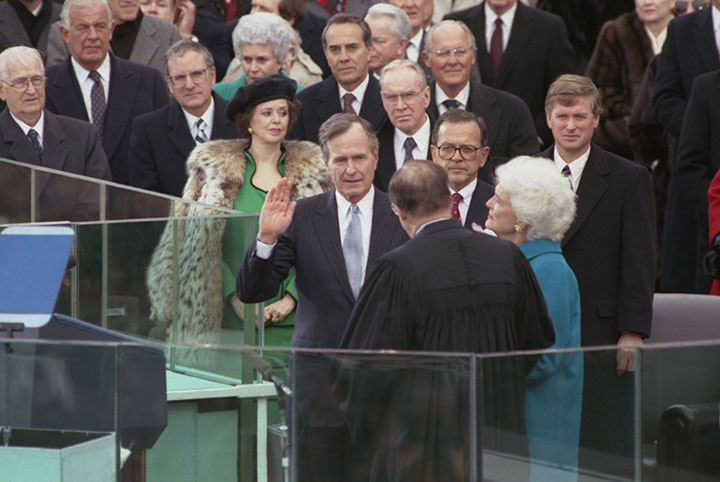
"To Make Kinder the Face of the Nation"
President Bush was the first sitting vice president to ascend to the presidency since 1837, and he was also only the second American president to serve a full term without party control in either chamber of Congress. Nevertheless, President Bush worked with Congress to pass the Americans with Disabilities Act and the Clean Air Act — landmark civil rights and environmental legislation. He also successfully fought for and negotiated the North American Free Trade Agreement (NAFTA), which was later signed into law. The education summit Mr. Bush hosted in 1989 with all 50 U.S. governors at the University of Virginia helped to spur a national reform movement. The 1990 budget agreement he signed codified into law real caps on discretionary spending by Congress while cutting the deficit by historic levels.
Points of Light
As president, Mr. Bush launched his “Points of Light” initiative to promote volunteerism and community service across America, and during his term in office he named 1,020 Daily Points of Light hailing from all 50 states. Long before he entered the political arena, however, he demonstrated his belief that “there could be no definition of a successful life that does not include service to others.” While at Yale, for example, he helped lead an annual charity fund drive that benefited the United Negro College Fund . In 1953, he helped establish the YMCA in Midland , Texas and served as chairman of the founding board. The Bushes also started the Bright Star Foundation to support cancer research following the death of their three year-old daughter, Robin, from leukemia on October 12, 1953.
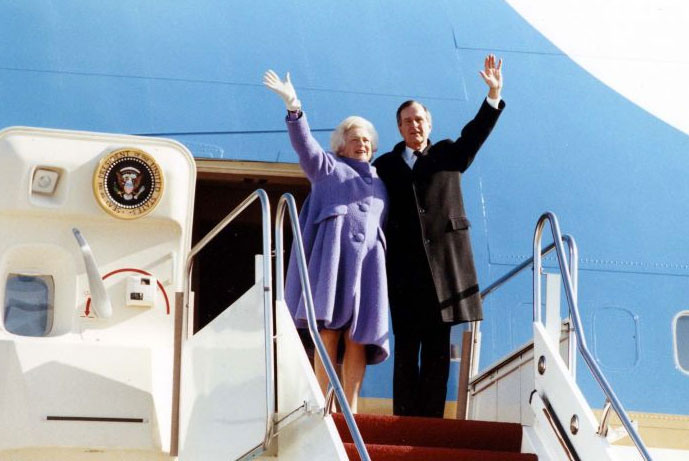
President George H. W. Bush has written two books – Looking Forward and A World Transformed – while his personal diary and other writings served as the basis for two additional books, All the Best and The China Diary of George H. W. Bush.

Looking Forward An autobiography; A World Transformed
Co-authored with General Brent Scowcroft, on foreign policy during his administration

All the Best
A collection of letters written throughout his life
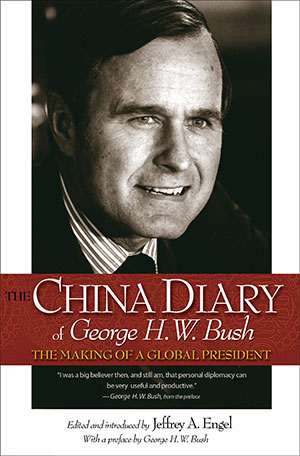
The China Diary of George H.W. Bush — The Making of a Global President.
In 2008, President Bush's diary, written during his time in China, was published under the title,
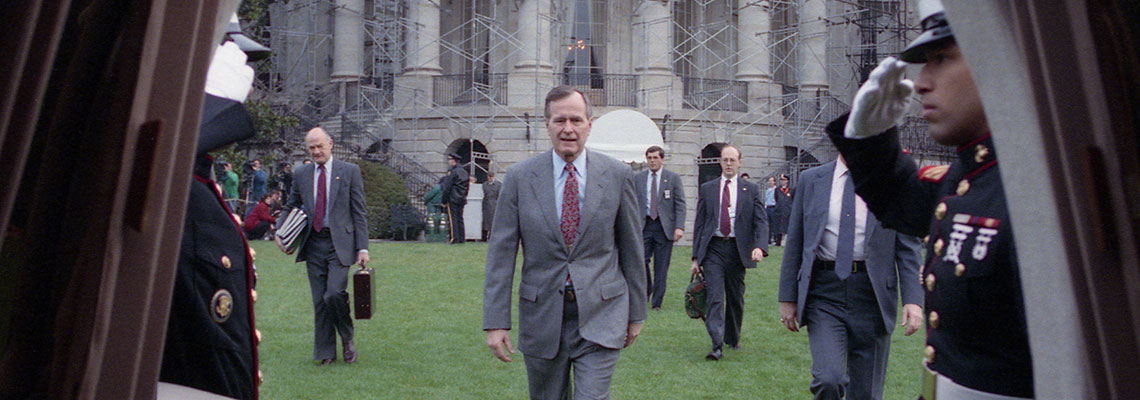
Spirit of Volunteerism
Since leaving office, President Bush has helped to raise hundreds of millions of dollars for charity. He served as chairman of the University of Texas’ M. D. Anderson Cancer Center Board of Visitors from 2001 to 2003, and the National Constitution Center in Philadelphia from 2006 to 2008. He was also named honorary chairman of the Points of Light Institute, the World Golf Foundation’s “First Tee” program, and C-Change, a coalition of cancer organizations. Of special note was his partnership with his successor, President Bill Clinton, to spearhead public awareness and financial relief efforts for victims of the 2004 Indian Ocean Tsunami , Hurricanes Katrina and Rita in 2005, and Hurricane Ike in 2008. In 2005, President Bush accepted an appointment from United Nations Secretary-General Kofi Annan as Special Envoy for the South Asian Earthquake Disaster following a devastating earthquake in Pakistan that claimed nearly 75,000 lives. He also teamed up with former Presidents Jimmy Carter, Bill Clinton, George W. Bush and Barack Obama to launch the One America Appeal for relief funds after the 2017 hurricane season devastated large swaths of Texas, Florida, Puerto Rico and the U.S. Virgin Islands
Relief Efforts
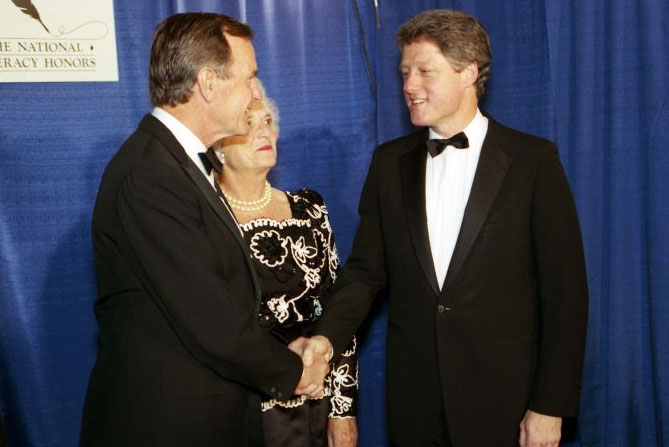
At the request of President George W. Bush, President Bush worked with President Bill Clinton to help raise funds to aid in the relief efforts following the catastrophic tsunami in Southeast Asia and Hurricane Katrina in the Gulf Coast states.
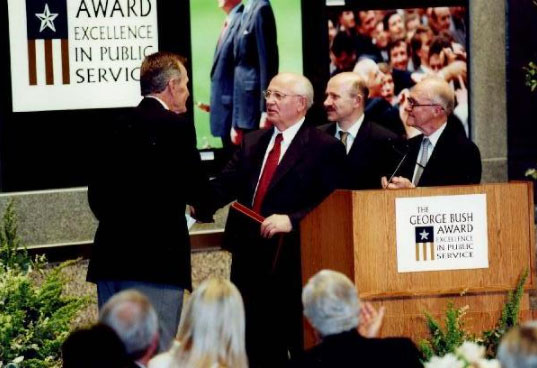
In 2006, he served as U.N. Secretary-General Kofi Annan's Special Envoy for the South Asia earthquake.
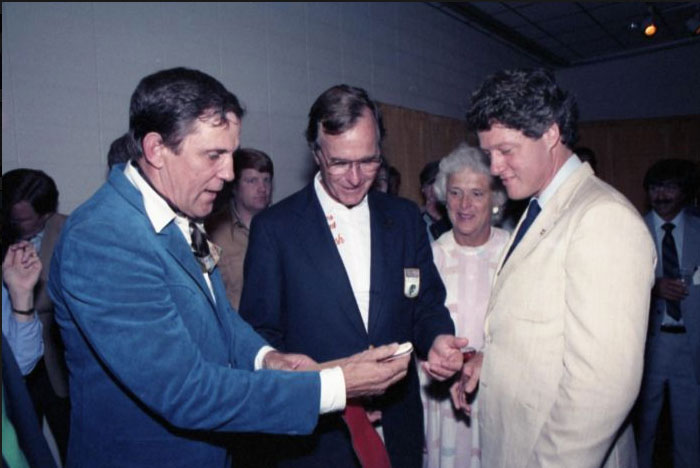
Following the destruction caused by Hurricane Ike on the Gulf Coast in September of 2008, President Bush again joined with President Clinton to form the Bush-Clinton Gulf Coast Recovery Fund to aid in the reconstruction of Gulf Coast infrastructure.
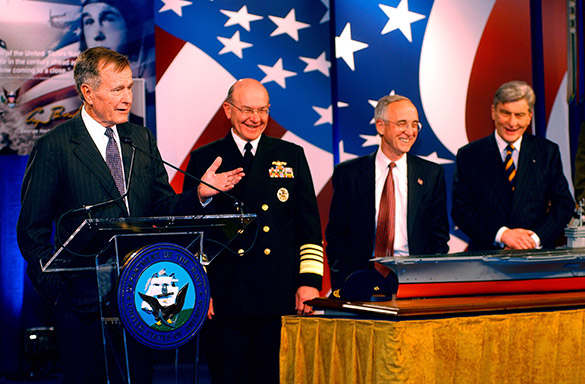
Special Honors
President Bush has received numerous honorary degrees and, after leaving the presidency, was awarded high honors from such nations as Kuwait, the United Kingdom, the Federal Republic of Germany, Nicaragua, Poland, the Czech Republic and Saudi Arabia. The Central Intelligence Agency headquarters in northern Virginia, Intercontinental Airport in Houston, and several elementary and high schools in Texas were named for the former president. The USS George H. W. Bush , which is the tenth and last of the Navy’s Nimitz-class supercarriers, was commissioned on January 10, 2009 at Norfolk Naval Station in Virginia and has deployed around the world in support of America’s foreign policy objectives. Finally, on February 15, 2011, President Bush accepted the Presidential Medal of Freedom from President Barack Obama during a White House ceremony .
Early Years
Born on June 12, 1924, in Milton, Mass., George Bush became a decorated naval pilot who flew torpedo bombers during World War II. He was shot down on September 2, 1944 while completing a mission over Chi Chi Jima Island and, tragically, lost his two crewmen William “Ted” White and John Delaney. By the time he was honorably discharged in September of 1945, Lieutenant Junior Grade Bush had logged 1,228 hours of flight time, 126 carrier landings and 58 combat missions. He was awarded the Distinguished Flying Cross, and the U.S. Navy Air Medal with two gold stars. Mr. Bush graduated Phi Beta Kappa from Yale University in 1948 with a degree in economics, and immediately moved to Texas with his wife Barbara and eldest son George W. to begin making his way in the oil business.
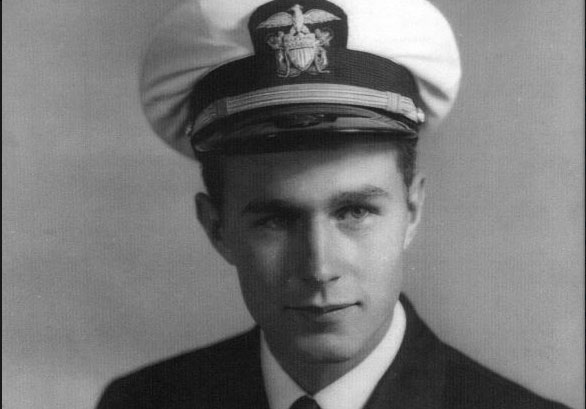
Political Career
President Bush's career in politics and public service began in February of 1963, when he was elected chairman of the Harris County (Texas) Republican Party. He was elected in 1966 to the U.S. House of Representatives from Texas' Seventh District and served two terms. Before serving as vice president from 1981 to 1989 under Ronald Reagan, President Bush held a number of senior-level positions: Ambassador to the United Nations (1971-1973); Chairman of the Republican National Committee (1973-1974); Chief of the U.S. Liaison Office in China (1974-1976); and Director of Central Intelligence (1976-1977).
Mr. Vice President
In 1980, Mr. Bush lost his first bid for the Republican presidential nomination to former California Governor Ronald Reagan, but accepted a spot on the GOP national ticket and served as the 43rd Vice President of the United States from 1981 to 1989. In that position, Mr. Bush managed federal deregulation and anti-drug efforts, and headed the Reagan administrations’ effort to combat terrorism. In foreign policy, President Reagan dispatched Vice President Bush at a pivotal and contentious time to help manage negotiations with key NATO allies leading to the deployment of Pershing II missiles in West Germany – a critical turning point in the Cold War. Flying from Texas to Washington, DC following the assassination attempt on President Reagan on March 30, 1981, Vice President Bush rejected a suggestion that he chopper directly from Andrews Air Force Base to the White House. “Only the president lands on the South Lawn,” he said, concerned about the worrisome impact such an irregular sight might have.
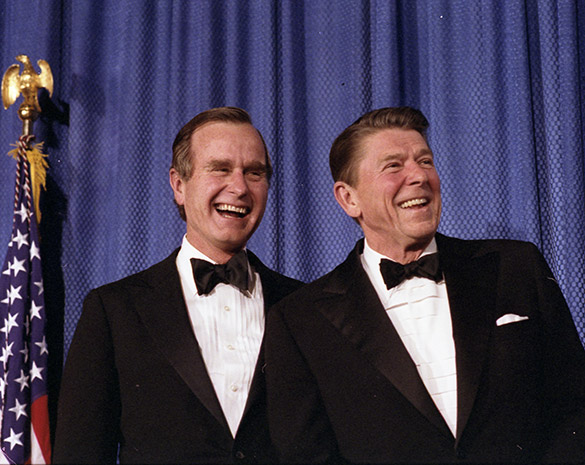
Family Life
George and Barbara Bush have five children, 17 grandchildren, and seven great-grandchildren. Their oldest son, George W., was sworn in as the 43rd President of the United States in 2001 and served two terms, returning to Texas in January 2009. Their son Jeb served as the 43rd Governor of Florida from 1999 to 2007. The Bushes have been married since January 6, 1945, and reside in Houston, Texas, and Kennebunkport, Maine. President Bush takes great pride that all of his children and grandchildren are active in their communities helping others.
Mobile Menu Overlay
The White House 1600 Pennsylvania Ave NW Washington, DC 20500
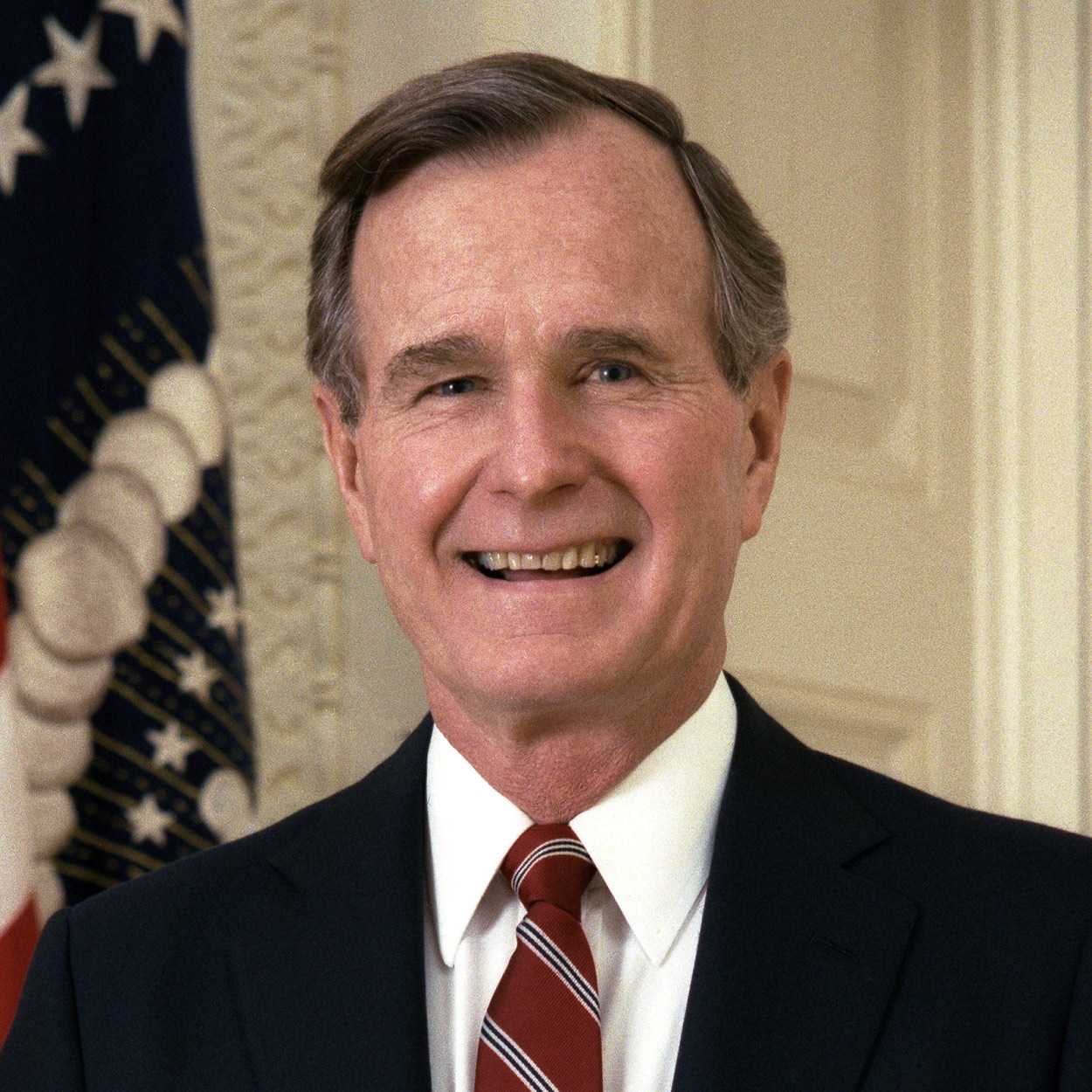
George H. W. Bush
The 41st President of the United States
The biography for President Bush and past presidents is courtesy of the White House Historical Association.
George H. W. Bush, as the 41st President (1989-1993), brought to the White House a dedication to traditional American values and a determination to direct them toward making the United States “a kinder and gentler nation” in the face of a dramatically changing world.
George Bush brought to the White House a dedication to traditional American values and a determination to direct them toward making the United States “a kinder and gentler nation.” In his Inaugural Address he pledged in “a moment rich with promise” to use American strength as “a force for good.”
Coming from a family with a tradition of public service, George Herbert Walker Bush felt the responsibility to make his contribution both in time of war and in peace. Born in Milton, Massachusetts, on June 12, 1924, he became a student leader at Phillips Academy in Andover. On his 18th birthday he enlisted in the armed forces. The youngest pilot in the Navy when he received his wings, he flew 58 combat missions during World War II. On one mission over the Pacific as a torpedo bomber pilot he was shot down by Japanese antiaircraft fire and was rescued from the water by a U. S. submarine. He was awarded the Distinguished Flying Cross for bravery in action.
Bush next turned his energies toward completing his education and raising a family. In January 1945 he married Barbara Pierce. They had six children– George, Robin (who died as a child), John (known as Jeb), Neil, Marvin, and Dorothy.
At Yale University he excelled both in sports and in his studies; he was captain of the baseball team and a member of Phi Beta Kappa. After graduation Bush embarked on a career in the oil industry of West Texas.
Like his father, Prescott Bush, who was elected a Senator from Connecticut in 1952, George became interested in public service and politics. He served two terms as a Representative to Congress from Texas. Twice he ran unsuccessfully for the Senate. Then he was appointed to a series of high-level positions: Ambassador to the United Nations, Chairman of the Republican National Committee, Chief of the U. S. Liaison Office in the People’s Republic of China, and Director of the Central Intelligence Agency.
In 1980 Bush campaigned for the Republican nomination for President. He lost, but was chosen as a running mate by Ronald Reagan. As Vice President, Bush had responsibility in several domestic areas, including Federal deregulation and anti-drug programs, and visited scores of foreign countries. In 1988 Bush won the Republican nomination for President and, with Senator Dan Quayle of Indiana as his running mate, he defeated Massachusetts Governor Michael Dukakis in the general election.
Bush faced a dramatically changing world, as the Cold War ended after 40 bitter years, the Communist empire broke up, and the Berlin Wall fell. The Soviet Union ceased to exist; and reformist President Mikhail Gorbachev, whom Bush had supported, resigned. While Bush hailed the march of democracy, he insisted on restraint in U. S. policy toward the group of new nations.
In other areas of foreign policy, President Bush sent American troops into Panama to overthrow the corrupt regime of General Manuel Noriega, who was threatening the security of the canal and the Americans living there. Noriega was brought to the United States for trial as a drug trafficker.
Bush’s greatest test came when Iraqi President Saddam Hussein invaded Kuwait, then threatened to move into Saudi Arabia. Vowing to free Kuwait, Bush rallied the United Nations, the U. S. people, and Congress and sent 425,000 American troops. They were joined by 118,000 troops from allied nations. After weeks of air and missile bombardment, the 100-hour land battle dubbed Desert Storm routed Iraq’s million-man army.
Despite unprecedented popularity from this military and diplomatic triumph, Bush was unable to withstand discontent at home from a faltering economy, rising violence in inner cities, and continued high deficit spending. In 1992 he lost his bid for reelection to Democrat William Clinton.
George H. W. Bush passed away on November 30, 2018, at the age of 94.
Learn more about George H. W. Bush’s spouse, Barbara Pierce Bush .
Stay Connected
We'll be in touch with the latest information on how President Biden and his administration are working for the American people, as well as ways you can get involved and help our country build back better.
Opt in to send and receive text messages from President Biden.
What can we help you find?
While we certainly appreciate historical preservation, it looks like your browser is a bit too historic to properly view whitehousehistory.org. — a browser upgrade should do the trick.
Main Content
George H. W. Bush

George H. W. Bush brought to the White House a wish to make the United States “a kinder and gentler nation.”
Coming from a family with a tradition of public service, George Herbert Walker Bush felt the responsibility to make his contribution both in time of war and in peace. Born in Milton, Massachusetts, on June 12, 1924, he became a student leader at Phillips Academy. On his 18th birthday he enlisted in the armed forces. The youngest pilot in the Navy when he received his wings, he flew 58 combat missions during World War II. On one mission over the Pacific as a torpedo bomber pilot he was shot down by Japanese anti-aircraft fire and then rescued from the water by a U.S. submarine. He was awarded the Distinguished Flying Cross for bravery in action.
In January 1945 Bush married Barbara Pierce. They had six children: George, Robin (who died at three), Jeb, Neil, Marvin, and Dorothy. After graduation from Yale, Bush embarked on a career in the Texas oil industry.
Like his father, Prescott Bush, who was elected a senator from Connecticut in 1952, George was interested in politics. He served two terms as a representative to Congress from Texas. Twice he ran unsuccessfully for the Senate. Then he was appointed to a series of important positions: ambassador to the United Nations, chairman of the Republican National Committee, chief of the U.S. Liaison Office in the People’s Republic of China, and director of the Central Intelligence Agency.
In 1980 Bush campaigned for the Republican nomination for president. He lost, but Ronald Reagan chose Bush as his running mate. In 1988 Bush won the Republican nomination for president and defeated Massachusetts Governor Michael Dukakis in the general election.
Bush faced a fundamentally changing world as the Cold War ended. The communist empire broke up, and the Berlin Wall fell. The Soviet Union ceased to exist. With his considerable foreign policy experience and his gift for personal diplomacy, Bush developed a relationship with Soviet President Mikhail Gorbachev that enabled collaboration and a reduction in strategic nuclear weapons.
President Bush also sent American troops into Panama to overthrow the corrupt regime of General Manuel Noriega. In 1990 Iraqi dictator Saddam Hussein invaded Kuwait, then threatened to move into Saudi Arabia. Vowing to free Kuwait, Bush rallied the United Nations and sent 425,000 American troops to the area as part of an international coalition poised to wage “Operation Desert Storm.” After weeks of air and missile bombardment, a 100-hour land battle routed Iraq’s million-man army.
Despite soaring popularity from the Desert Storm victory, Bush was unable to surmount uncertainty about the economy and the urge for change after 12 Republican years in the White House. In 1992 he lost his bid for reelection to Democrat Bill Clinton.
Nevertheless his sons George and Jeb became governors of Texas and Florida. When son George ran for president in 2000, his father told voters, “This boy—this son of ours—is not going to let you down.” George W. Bush’s election made his father the second president in history, after John Adams, to witness a son elected president. Years later, when the latter President Bush was criticized, family members noted that the proud patriarch took the barbs more emotionally than the criticism once directed at himself.
George H.W. Bush passed away on November 30, 2018 at the age of 94.
Related Information
- Barbara Bush
Portrait Painting
You might also like.

America’s Irish Roots
Featuring Geraldine Byrne Nason, Ambassador of Ireland to the United States

Washington National Cathedral & the White House
Featuring Very Reverend Randolph Hollerith and Reverend Canon Jan Naylor Cope

The Nixon White House 1969 - 1974
On January 20, 1969, Richard Nixon was inaugurated as the thirty-seventh president of the United States. During his time in the White House (1969–74), President Nixon sought to unite a divided nation after the social, political, and cultural turbulence of the 1960s. Before becoming president, Nixon served in the U.S. Navy, the U.S. House of Representatives, the U.S. Senate, and as

Presidential and First Lady Portraits
Since 1965, the White House Historical Association has been proud to fund the official portraits of our presidents and first ladies, a long-standing tradition of the White House Collection. Recent presidents and first ladies typically select their respective artists before leaving the White House and approve the portraits before their formal presentation to the public and induction into the collection. The

The 2022 White House Christmas Ornament
Every year since 1981, the White House Historical Association has had the privilege of designing the Official White House Christmas Ornament. These unique collectibles — honoring individual presidents or specific White House anniversaries — have become part of the holiday tradition for millions of American families. In this collection, explore the history behind our 2022 design and learn more about President Richard Nixon. Buy the
White House Builder James Hoban’s Irish Roots
Featuring Laurie Grace, Chairman of the James Hoban Society of Ireland; Brother Christy O’Carroll, Congregation of Christian Brothers; Ciarán O’Connor, State Architect of Ireland; Merlo Kelly, Senior Architect, Lotts Architecture & Urbanism; Brian O’Connell, Director and Founder of O’Connell Mahon Architects and a contributor to the book James Hoban: Designer and Builder of the White House

Weddings and the White House
From First Lady Dolley Madison's sister Lucy Payne Washington's wedding in 1812 to the nuptials of President Joseph Biden and First Lady Jill Biden's granddaughter Naomi Biden on the South Lawn in November 2022, the White House has long been the site of wedding ceremonies and receptions. In over two hundred years, there have been nineteen documented weddings and four receptions hosted

The Ford White House 1974 - 1977
Gerald Rudolph Ford Jr., the nation’s only unelected president and vice president, served thirteen terms in Congress before rising to national attention in 1973, when President Richard Nixon nominated him as vice president. Less than a year later, Ford became president, following President Nixon's resignation from office. The Fords made and celebrated history during their time in the White House, fr


Dinner with the President
Featuring Alex Prud’homme, bestselling author and great-nephew of cooking legend Julia Child

Becoming FDR: The Personal Crisis That Made a President
Featuring Jonathan Darman, author of “Becoming FDR: The Personal Crisis That Made a President"

250 Years of American Political Leadership
Featuring Iain Dale, award-winning British author and radio and podcast host

The 2023 White House Christmas Ornament
Every year since 1981, the White House Historical Association has had the privilege of designing the Official White House Christmas Ornament. These unique collectibles — honoring individual presidents or specific White House anniversaries — have become part of the holiday tradition for millions of American families. In this collection, explore the history behind our 2023 design and learn more about President Gerald R. Ford. Buy


- Afghanistan
- Budget Management
- Environment
- Global Diplomacy
- Health Care
- Homeland Security
- Immigration
- International Trade
- Judicial Nominations
- Middle East
- National Security
- Current News
- Press Briefings
- Proclamations
- Executive Orders
- Setting the Record Straight
- Ask the White House
- White House Interactive
- President's Cabinet
- USA Freedom Corps
- Faith-Based & Community Initiatives
- Office of Management and Budget
- National Security Council
- Nominations
President of the United States - George W. Bush
Biography of president george w. bush.
George W. Bush is the 43rd President of the United States. He was sworn into office on January 20, 2001, re-elected on November 2, 2004, and sworn in for a second term on January 20, 2005. Prior to his Presidency, President Bush served for 6 years as the 46th Governor of the State of Texas, where he earned a reputation for bipartisanship and as a compassionate conservative who shaped public policy based on the principles of limited government, personal responsibility, strong families, and local control.
President Bush is married to Laura Welch Bush, a former teacher and librarian, and they have twin daughters, Barbara and Jenna. The Bush family also includes two dogs, Barney and Miss Beazley, and a cat, Willie.
En Español
Graduate School
Career and public service.
- Owner, oil and gas business
- Partner, Texas Rangers Baseball Team
- Governor of Texas
- President of the United States
Related Links
- Vice President Cheney Biography
- Laura Bush Biography
- Lynne Cheney Biography

- Skip to main content
- Keyboard shortcuts for audio player
Looking Back At George H.W. Bush's Legacy
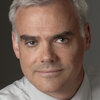
Scott Horsley
President George H.W. Bush has died at the age of 94. We look back on his life and legacy.
Copyright © 2018 NPR. All rights reserved. Visit our website terms of use and permissions pages at www.npr.org for further information.
NPR transcripts are created on a rush deadline by an NPR contractor. This text may not be in its final form and may be updated or revised in the future. Accuracy and availability may vary. The authoritative record of NPR’s programming is the audio record.
My Journey Through the Best Presidential Biographies

The Best Biographies of George H.W. Bush
07 Monday Jan 2019
Posted by Steve in Best Biographies Posts , President #41 - GHW Bush
≈ 9 Comments
American history , biographies , book reviews , George HW Bush , Herbert Parmet , Jon Meacham , presidential biographies , US Presidents

But now, despite his heroics in combat, his business acumen, his extraordinary capitalist grit and his unobtrusive but earnest political ambition, George H.W. Bush suddenly seems a quiet and unassuming figure from a long-passed era.
Bush 41’s presidency ended nearly a quarter-century ago but it still seems premature to consider the “best biographies” of him due, in part, to the recency of his death, his still-evolving legacy and the scarcity of biographies covering his life. And, in my opinion, the definitive biography of Bush 41 has yet to be written…
I read two biographies of Bush: a relatively dated book by noted historian (and author) Herbert Parmet and a much newer one by renowned biographer (and historian) Jon Meacham. In many ways the biographies are yin and yang , seemingly very different…but exceptionally complementary. Neither is ideal, but together they are clearly worth more than the sum of their parts.
* “ Destiny and Power: The American Odyssey of George Herbert Walker Bush ” (2015) by Jon Meacham
The author’s proximity to his subject is the defining feature of this biography. Meacham came to know Bush (and his family) extremely well during the decade-plus he spent writing this book. Meacham was even selected to eulogize Bush at his recent funeral. Thus, “Destiny and Power” affords readers the opportunity to see the world through Bush’s eyes. And in a very palpable way this biography reads like the memoirs Bush never wrote for himself.
But Bush’s pre-presidency passes too quickly and with too little depth. And while his presidency is covered at a more deliberate pace it often feels too forgiving. While Meacham is critical of Bush on occasion, pointing out flaws or failures, the book exudes an undeniable air of sympathy and affinity.
Nevertheless, Meacham is able to provide insight into Bush’s character and his world view that is likely to prove unique among Bush 41’s biographers – past and future. And although it failed to live up to my high expectations, this is a must-read on George H.W. Bush — 4 stars ( Full review here )
* “ George Bush: Life of a Lone Star Yankee ” (1997) by Herbert Parmet
Parmet was a long-time historian, professor and prolific author who died recently. His biography of Bush is not quite cradle-to-grave; it ends with the Bush presidency (leaving aside his retirement years and political legacy). But, otherwise, it is both comprehensive and thorough.
The best aspect of this biography is Parmet’s review of Bush’s early years. Nowhere have I seen better coverage of Bush 41’s ancestry, his military service, his congressional career, his service with the UN or the CIA. By comparison, Bush’s national political career is fine but not exceptional; pages devoted to President Bush’s response to Iraq’s invasion of Kuwait is particularly noteworthy, however.
What Jon Meacham does well in “Destiny and Power” tends to be in short supply here; Meachem sees the world from his subject’s perspective (but not from a distance) while Parmet observes events through a reporter’s eyes. To Parmet, things just happen ; understanding why is comparatively unimportant. For Meacham, understanding Bush’s mindset is of paramount importance; seeing things from an impartial third-party point of view is less critical.
In the end, Parmet’s and Meacham’s coverage of Bush’s life are surprisingly synergistic. But for Bush’s pre-presidency, Parmet’s coverage gets the nod — 3¾ stars ( Full review here )
Best Biography of George HW Bush: ***Too early to call***
Solid “One-Two” Punch: Parmet’s “George Bush” followed by Meacham’s “Destiny and Power”
Follow-up :
– “ George H. W. Bush: The American Presidents Series ” by Timothy Naftali
9 thoughts on “The Best Biographies of George H.W. Bush”
January 7, 2019 at 12:14 pm
Follow-up suggestion: 41: A Portrait of My Father by George W. Bush
January 7, 2019 at 12:19 pm
Thanks, great suggestion! For the moment I’m only including on my “follow-up” list biographies that veer toward history and away from memoirs / autobiography. But I do need to go back and read memoirs, autobiographies and books like this which provide a personal perspective inaccessible in traditional biographies.
January 7, 2019 at 12:25 pm
“When the World Seemed New” would be a good follow-up as well. It does cover his whole life, but the prime focus is Bush’s presidency, specifically his foreign policy and its impact on the world.
August 2, 2020 at 9:03 am
I agree “41” is a good follow-up, as offers a rare opportunity to read such a personal biography of one president written by another. It’s also a quick read, and Steve will can do it in one sitting. I also get that it is a bit of a memoir of W. himself. It can be put in it’s own sub-category of bios written by family members or close friends. I’ve just recently picked up Margaret Truman’s portrait of her father, after enjoying “41” so much.
January 7, 2019 at 10:50 pm
Steve, as one of the avid readers of your site, I can’t help but think that Bush I is one of those that I will probably have more choices than your’s by the time I get to certain presidents, due to my reading schedule (one bio per president, and four or five a year). I won’t hit Bush until 2026 and there are almost certain to be more bios of him by that time. Probably even a new Carter or two, not to mention Ford.
August 2, 2020 at 9:10 am
I like your pace, Teach! I am hopefully wrapping up my one-of-each this year, completing my journey that began in 2015. GHWB lived such a full, fascinating life, that it’s hard to imagine there won’t be some brilliant biographies to come. I’ve preordered Jonathan Alter’s new bio of Carter due out next month!
June 1, 2022 at 8:44 am
Suggestion to add to your follow-up list for POTUS 41: “The Man I Knew” by his post-presidency Chief of Staff, Jean Becker. It is one of my favorite president-related books I have ever read. My wife (who doesn’t read books often) and I both read it, and we both cried while reading certain portions of it. Not only is the book really informative (about POTUS 41, but also POTUS 43, 42 and 44), but it is quite inspirational. It made me long to have a man of that type of charcter in the White House again. It is more y about George H.W. Bush as a person than as a political figure, but it was an absolutely delightful read. One of my favorite books of any kind that I have read over the past decade.
February 5, 2024 at 11:36 pm
It might not be a traditional biography but how about What It Takes by Richard Ben Cramer? Focused on the 1988 election, but I think it goes pretty deeply into the backgrounds of the candidates including GHWB.
February 6, 2024 at 4:58 am
Great suggestion – I’ve never read this one and had almost forgotten about it until you mentioned it. Well…another post-it note with a good book idea going up on the wall… 🙂
Leave a comment Cancel reply

- Already have a WordPress.com account? Log in now.
- Subscribe Subscribed
- Copy shortlink
- Report this content
- View post in Reader
- Manage subscriptions
- Collapse this bar
Help inform the discussion
George W. Bush: Life in Brief
George W. Bush, the 43rd President of the United States, led the country during a time of great challenge and change. The terrorist attacks of September 11, 2001, the global war on terror, the war in Iraq, and the economic downturn of 2008 are just some of the major events that Bush had to contend with during his time in office. At different times, President Bush was both the most popular president and one of the least popular presidents in American history, and his administration sparked both passionate defenders and vehement critics. His presidency will continue to be studied and debated for years to come.
When George W. Bush took office in 2001, he became only the second President of the United States whose father had also been president. George H.W. Bush served in office from 1989 to 1993, and John Adams and John Quincy Adams were both presidents in the early 1800s. George W. Bush was also one of the few Presidents to win office despite losing the popular vote. (Interestingly John Quincy Adams also won the presidency without winning the popular vote.)
George W. Bush was born on July 6, 1946, the first child of George Herbert Walker and Barbara Bush. The young Bush greatly admired his father and followed in his footsteps throughout much of his life—including serving as President of the United States. Bush was not an exceptional student but attended some of the premier educational establishments in the United States, including Phillips Academy Andover, Yale University, and Harvard University.
Bush served as a pilot in the Texas Air National Guard during the Vietnam War, but remained in the United States and saw no combat. After a number of short-term jobs, Bush landed a position with an oil company in the 1970s and eventually established his own energy company before going on to be part owner of the Texas Rangers baseball club. He married Laura Welch in 1977, and they had twin daughters, Jenna and Barbara, in 1981. As President, Bush was known for his evangelical Christian faith, but that faith, and the sobriety that accompanied it, did not come until he was in his forties.
Bush made his first run for public office in 1978, but failed to win the congressional seat he sought. He did not run for political office again until his father had left the presidency. In 1993, Bush challenged the popular Democratic governor of Texas, Ann Richards. Focusing on education, juvenile justice, welfare, and tort reform, Bush’s victory stunned much of the nation. He won reelection for governor by a landslide in 1998, and that victory helped launch him into the 2000 race for the presidency. Bush defeated Senator John McCain of Arizona for the Republican nomination and then went on to win a controversial and disputed victory over Vice President Al Gore in November. Although Gore won the popular vote nationwide by more than 500,000 ballots, Bush tallied the constitutionally required 270 Electoral College votes by winning a few hundred more popular votes in Florida after a contested recount. The election spurred weeks of litigation, ultimately settled by the U.S. Supreme Court, making it one of the most controversial elections in American history.
George W. Bush launched his administration against one of the most polarized political landscapes in recent memory. The Republicans were eager to reclaim the White House after eight years of the contentious Clinton administration, and many Democrats did not consider Bush to be a legitimately elected President. Bush’s “compassionate conservative” philosophy defined his approach to domestic policy. It utilized traditional tenets of conservatism, such as small government and free market principles, to help people help themselves, and local groups such as churches to help those who could not help themselves. Among his initiatives, President Bush created the Office of Faith-Based and Community Initiatives to allow religious organizations to work with government to address social problems. Among his top priorities, Bush succeeded in getting Congress to pass the No Child Left Behind Act in 2001 with bipartisan support. The law raised national education standards and allocated funding according to test results but was not without its controversy because of its reliance on testing and the weakening of local autonomy.
Bush’s health care initiative, the Medicare Modernization Act of 2003, established prescription drug benefits for seniors and created health savings accounts. It also sought to provide a more competitive market for Medicare services. Beginning in 2003, Bush began pursuing the partial privatization of the Social Security system, a controversial and ultimately unsuccessful initiative.
President Bush’s economic policy reflected hands-off conservative supply side theory. One of his major domestic accomplishments in his first term was garnering congressional support for $1.35 trillion in tax cuts but only at the expense of making them temporary rather than permanent in the tax code. Although he inherited the beginnings of an economic slowdown, by 2007 the stock market topped 14,164, more than 6,000 points higher than it had been five years earlier, and unemployment fell to 4.7 percent.
Government expenditures kept growing, however, as tax revenue declined, moving the government from a balanced budget to huge budget deficits. In the fall of 2008, and in the middle of the presidential campaign to replace President Bush, the economy imploded as the bubble of housing prices collapsed and financial institutions began to fail. The stock market crashed, prompting an economic situation that came to be known as “the Great Recession.”
The most transformative event of the Bush presidency occurred on September 11, 2001. Islamic terrorists from a group called al Qaeda succeeded in a coordinated attack using airliners as missiles, crashing into the Pentagon, collapsing the Twin Towers in New York City, downing a plane in Pennsylvania, and killing nearly 3,000 people. The events of that day moved Bush from a President concerned with “compassionate conservative” solutions at home to one focused intensely on threats from abroad. He also went from a President some considered illegitimately elected and unpopular to becoming, for a time, the most popular President in American history. After the attacks, Bush spoke for an angry and mourning nation, and he became a rallying point for the American people. As he recalled in his autobiography, Decision Points , “In a single morning, the purpose of my presidency had grown clear: to protect our people and defend our freedom that had come under attack.”
After the terrorist attacks on New York and Washington, D.C., President Bush addressed a joint session of Congress, on September 20, 2001, and laid out what became known as the Bush Doctrine: “Our war on terror begins with al Qaeda, but it does not end there. It will not end until every terrorist group of global reach has been found, stopped, and defeated.” He went further, “From this day forward, any nation that continues to harbor or support terrorism will be regarded by the United States as a hostile regime.” In his remarks, Bush was indicating that war in Afghanistan was eminent as the terrorists of 9/11 were trained and harbored in that rugged Islamic nation.
On October 7, 2001, coordinated American military attacks began in Afghanistan against al Qaeda terrorist training camps and military installations of the Taliban regime, which had supported al Qaeda. The Taliban was quickly driven from power, and members of al Qaeda fled into the mountains or across the borders to find refuge. What seemed like a quick and easy war against a Third World nation and terrorist group, however, would become the longest war in American history. The U.S. mission evolved from one of dismantling terrorist cells in the region to bolstering civil society and installing a new democratically elected government in Afghanistan.
Once the Taliban was in retreat, Bush and his advisers returned to their long-standing concerns about the dangers of Iraq and its leader Saddam Hussein. Vice President Dick Cheney summed up the administration’s case in a speech on August 26, 2002, at the Veterans of Foreign Wars national convention. He declared, “Simply stated, there is no doubt that Saddam Hussein now has weapons of mass destruction. There is no doubt that he is amassing them to use them against our friends, against our allies, and against us.” After the administration’s public education effort, Congress authorized the President to use force against Iraq if he found it necessary.
On March 19, 2003, U.S. and British forces launched a series of strikes on government instillations and other targets in Iraq. A ground invasion followed soon after. Although the regime collapsed quickly and the United States won decisive victories on the battlefield, Iraq soon descended into sectarian violence with U.S. forces caught in the middle of a civil war for control of the country. Despite all the assurances from the Bush administration, based on intelligence from the world’s spy agencies, no weapons of mass destruction were found in Iraq. The war there became deeply unpopular with the American public as American casualties mounted, and there seemed to be no good solution on the horizon. As a result, President Bush’s popularity sagged.
Although initially very popular, Bush’s actions in the “war on terror” became some of his most controversial acts as President. His administration established military tribunals for captured terrorists, approved a list of “enhanced-interrogation techniques,” and instituted the Terrorist Surveillance Program (TSP) to scour domestic communications. Congress established a new Department of Homeland Security, passed the Patriot Act, and authorized war against all those who orchestrated the 9/11 attacks or who might plan future attacks. Vice President Cheney, along with so-called “neoconservatives” in the Bush administration, counseled a very aggressive approach to the post-9/11 world. Many opponents vehemently disagreed with the administration’s policies.
The Bush presidency began with conservative reform goals, such as lowering taxes, but became better known as the presidency that prosecuted America’s war on terror. The September 11, 2001, attacks changed the entire focus of the Bush administration. The long, hard wars in Afghanistan and Iraq cost thousands of U.S. lives, billions of dollars, and damaged Bush’s popularity as President. He ended his time in office with low job approval, and with Republicans losing control of Congress in the 2006 elections and the White House in the 2008 election.
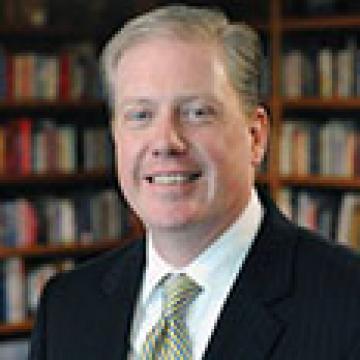
Gary L. Gregg II
Professor University of Louisville
More Resources
George w. bush presidency page, related reading, life in brief (current essay), life before the presidency, campaigns and elections, domestic affairs, foreign affairs, life after the presidency, family life, the american franchise, impact and legacy.

President George Bush

- As of 2011, George and his wife Barbara have been married for 66 years, the longest of any presidential couple.
- George celebrated his 85th birthday by going skydiving.
- In 1993 he was knighted by Queen Elizabeth II . He was the third American president to receive an honorary knighthood.
- He was awarded the Distinguished Flying Cross medal while serving as a pilot in World War II.
- For a short time he worked as a professor at Rice University.
- Take a ten question quiz about this page.
- Listen to a recorded reading of this page:
George W. Bush
George W. Bush was the 43rd president of the United States. He led his country's response to the 9/11 attacks in 2001 and initiated the Iraq War in 2003.
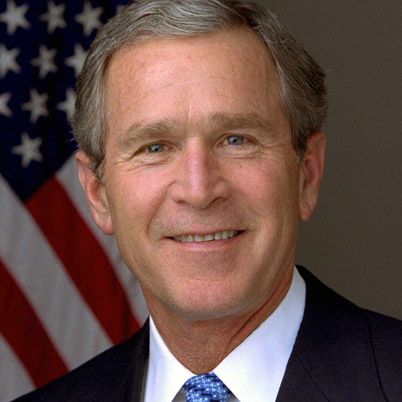
Who Is George W. Bush?
Born in July 6, 1946, in New Haven, Connecticut, George W. Bush was the 43rd president of the United States. He narrowly won the Electoral College vote in 2000, in one of the closest and most controversial elections in American history. Bush led the United States' response to the 9/11 terrorist attacks and initiated the Iraq War. Before his presidency, Bush was a businessman and served as governor of Texas.
George Walker Bush was born on July 6, 1946, in New Haven, Connecticut. He is the eldest of six children of George Herbert Walker Bush and Barbara Pierce Bush. The Bush family had been involved in business and politics since the 1950s. Bush's grandfather, Prescott Bush, was a former Wall Street banker and progressive Republican senator from Connecticut, and his father was a businessman, diplomat, and vice president and president of the United States.
In 1948, George H.W. Bush moved the family to Midland, Texas, where he made his fortune in the oil business. Young George spent most of his childhood in Midland, attending school there until the seventh grade. The family moved to Houston in 1961, and George W. Bush was sent to Phillips Academy in Andover, Massachusetts. There he was an all-around athlete, playing baseball, basketball and football. He was a fair student and had a reputation for being an occasional troublemaker. Despite this, family connections helped him enter Yale University in 1964.
George W. Bush was a popular student at Yale, becoming president of the Delta Kappa Epsilon fraternity and also playing rugby. For Bush, grades took a back seat to Yale’s social life. Despite his privileged background, he was comfortable with all kinds of people and had a wide circle of friends and acquaintances. Like his father and grandfather before him, George W. Bush became a member of Yale’s secretive Skull and Bones society, an invitation-only club whose membership contains some of American’s most powerful and elite family members.
Two weeks before graduation, at the end of his draft deferment, George W. Bush enlisted in the Texas Air National Guard. It was 1968 and the Vietnam War was at its height. Though the Guard unit had a long waiting list, Bush was accepted through the unsolicited help of a family friend. Commissioned as a second lieutenant, he earned his fighter pilot certification in June of 1970. Despite irregular attendance and questions about whether he had completely fulfilled his military obligation, Bush was honorably discharged from the Air Force Reserve on November 21, 1974.
Personal Life
After his Guard duty, George W. Bush continued his education, enrolling at Harvard Business School, where he earned a Masters of Business Administration degree in 1975. He then returned to Midland and entered the oil business, working for a family friend, and later started his own oil and gas firm. In 1977, at a backyard barbeque, Bush was introduced by friends to Laura Welch, a school teacher and librarian. After a quick three-month courtship, he proposed, and they were married on November 5, 1977. The couple settled in Midland, Texas, where Bush continued to build his business.
George W. Bush credits his wife for bringing his life in order. Prior to marriage, he had several embarrassing episodes with alcohol. Soon after marrying Laura, he joined the United Methodist Church and became a born-again Christian. In 1981, the couple enjoyed the arrival of twin daughters, Barbara and Jenna. In 1986, Bush sold his struggling oil business to Harken Energy Corporation for stock and a seat on its board of directors. It was also at this time that he quit drinking and became deeply involved in his church.
Governor of Texas
In 1988, George W. Bush moved his family to Washington DC to work on his father’s bid for the White House, participating in campaign activities and meeting influential people. After his father’s victory, he returned to Texas, and in 1989 joined a group of investors purchasing the Texas Rangers baseball team. George W. Bush quickly emerged as the group’s leader and made some savvy trades. The team did well and Bush earned a reputation as a successful businessman. In 1998, Bush sold his share of the team for a reported 17 times his initial investment.
After his father’s 1992 reelection loss to Bill Clinton, George W. Bush decided to run for governor of Texas as a Republican. His affiliation with the Rangers and his family reputation helped him in the 1994 campaign against incumbent Democrat Ann Richards. His campaign focused on welfare and tort reform, crime reduction, and education improvement. The contest was contentious and bare knuckled, with accusations of financial impropriety on one side, and homosexuality on the other. Bush won the election with 53 percent of the vote and became the first child of a U.S. president to be elected a state governor. In 1998, Bush became the first Texas governor to be elected to consecutive four-year terms.
As governor, George W. Bush appealed to moderate Republicans and Christian conservatives in his own party and earned a reputation for bipartisan governing. He implemented the philosophy of "compassionate conservatism," which combined limited government with concern for the underprivileged and personal responsibility. The previous gubernatorial administration left the Texas treasury in a surplus, so Bush pushed for a tax cut and increased funding for education. He promoted educational reform, tying teachers’ salaries to student performance on standardized tests, and signed into law legislation lowering the age at which juveniles could be tried in adult courts.
First Term as President
In 1999, George W. Bush began his quest for the presidency, and after a contentious series of primary elections, he won the Republican presidential nomination. The 2000 presidential election pitting George W. Bush and Democratic candidate Al Gore was close and controversial. As Election Day unfolded, there was no clear winner. The late-night news declared one candidate the winner, then the other the winner. By early the next morning, Bush had 246 electoral votes and Gore had 255, with 270 needed to win. Florida’s 25 electoral votes were held in the balance where several counties reported problems with balloting. After more than a month of recounts and legal maneuvering, the U.S. Supreme Court decided the election, giving George Bush the victory. Though Gore lost the election in the Electoral College (271 to 266) he received over 543,000 more popular votes than Bush, a result that further complicated Bush’s victory.
In the first two years of his presidency, George W. Bush enjoyed a political majority in both Congressional houses but faced a strongly divided government. At times, his political rhetoric fueled this divide. Taking a budget surplus left by the previous Democratic administration, Bush pushed through a $1.35 trillion tax cut to stimulate the economy, but critics contended it favored the wealthy. His administration prompted further controversy when he announced the U.S. would not abide by the Kyoto Protocol for reducing green-house gas emissions, citing potential harm to the U.S. economy.
9/11 and Iraq War
On September 11, 2001, Al Qaeda terrorists hijacked four U.S. commercial jetliners. Three of them hit their targets in New York and Washington, D.C. A fourth plane crashed into a farmer’s field in Pennsylvania. The war on terror had begun, and President George W. Bush promised the American people that he would do all he could to prevent another terrorist attack. A comprehensive strategy was formed with the creation of the Homeland Security Department, the Patriot Act and the authorization of intelligence gathering that, for a time, included monitoring international phone calls made by U.S. citizens. The Bush administration also built international coalitions to seek out and destroy Al Qaeda and other terrorist organizations in Afghanistan, where the ruling Taliban government was said to be harboring Al Qaeda leader Osama bin Laden.
As the conflict raged on, United States military forces in Afghanistan began transferring Taliban fighters and suspected Al Qaeda members to a special prison at Guantánamo Bay, Cuba, a permanent U.S. naval base. Hundreds of prisoners were held there as enemy combatants, a classification given by the Bush administration that stated terror detainees were not protected by the Geneva Conventions. As a result, many were subject to enhanced interrogation techniques, which in the opinion of various international organizations, including the Red Cross, amounted to torture.
In September, 2002, the Bush administration announced that the United States would preemptively use military force if necessary to prevent threats to its national security by terrorists or "rogue states" especially any that possessed weapons of mass destruction. Based on what would prove to be inaccurate intelligence reports, the Bush administration successfully obtained a UN Security Council resolution to return weapons inspectors to Iraq. Soon afterward, Bush declared that Iraq hadn’t complied with inspections, and on March 20, 2003, the United States launched a successful invasion of Iraq, quickly defeating the Iraqi military. Baghdad, the Iraqi capital, fell on April 9, 2003, and Bush personally declared an end to major combat operations on May 1, 2003. With a power vacuum in place, Iraq soon fell into a sectarian civil war.
Second Term as President
In 2004, George W. Bush ran for re-election. Though the wars in Iraq and Afghanistan were not going well, and his efforts in Social Security reform had met with great resistance, Bush's political core remained supportive, and he was able to win reelection over Democratic challenger Senator John Kerry in the November election. During his second term, Bush pushed for immigration reform, which received criticism from many conservatives, and eased environmental regulations, which received criticism from many liberals. The Bush administration's poor response to Hurricane Katrina in New Orleans further pushed down his favorability rating.
In 2008, as George W. Bush entered the final year of his presidency, the country faced enormous challenges. The United States was fighting two foreign wars, and the budget surplus left by the Clinton administration had transformed into a multi-trillion-dollar debt—the effects of military spending, tax cuts, and slow economic growth. In the early fall of 2008, the country was hit with a severe credit crisis that sent the stock market into free fall and led to massive layoffs. The Bush administration scrambled and encouraged Congress to enact a controversial $700 billion Emergency Economic Stabilization Act to bail out the housing and banking industries.
Life After the White House
George W. Bush left office in January, 2009, leaving behind much unfinished business and low approval ratings. The country remained politically divided. Critics laid much of the country’s misfortunes at his feet, while supporters defended him for his strong leadership during one of the country’s most dangerous periods. Bush and his wife settled in Dallas, Texas, where he participated in the building of his presidential library and wrote his memoir "Decision Points." At the request of President Barack Obama, Bush and former president Bill Clinton led private fundraising efforts in the United States for disaster relief, after the 2010 Haiti earthquake.
After years of leading a relatively quiet life in Texas, Bush returned to the media spotlight in 2013. He was on hand for the opening of the George W. Bush Library and Museum on the grounds of Southern Methodist University in Dallas, Texas. The other living former presidents, including Bill Clinton and Bush's own father, attended the event as did President Barack Obama. Bush joked that "There was a time in my life when I wasn't likely to be found at a library, much less found one," according to Fox News. Speaking on a more serious note, Bush seemed to defend his time as president. "When people come to this library and research this administration, they’re going to find out we stayed true to our convictions," he said.
George W. Bush played up to his Texas roots through most of his political life. For both his supporters and detractors, it provided reasons for their support and criticism. For some, his folksy image and manner suggested he was "not ready for prime time," politically adept, but not a statesman at a time when the country need one. For others, he was perceived as a president of big ideas who eagerly embraced large visions and the risks involved. His supporters credit him with re-establishing America’s place as the world’s uncontested leader. Internationally, he has been maligned for his "cowboy diplomacy" in foreign affairs. Like many presidents before him, the George W. Bush presidency will find its place in history balanced against his successes and failures.
In July 2013, George W. Bush made history when he joined President Barack Obama in Africa in commemoration of the 15th anniversary of Osama bin Laden's first attack on the United States—marking the first meeting on foreign soil to commemorate an act of terrorism between two U.S. presidents.
Bush ran into some health problems later that summer. On August 6, he underwent surgery to insert a stent in his heart to open a blockage in one of his arteries. The blockage discovered during his annual physical. Through a spokesperson, Bush expressed his gratitude to "the skilled medical professionals who have cared for him," according to the Associated Press. Bush also thanked "his family, friends, and fellow citizens for their prayers and well wishes. And he encourages us all to get our regular check-ups."
That October, it was revealed that Bush's heart condition was more serious than originally described. He had a 95% blockage in that artery before his surgery, according to CNN.com. If he had not been treated, Bush would have been at risk of having a heart attack.
As time brought him further away from his tenure in the White House, Bush came to be viewed as more of a wise elder, offering measured tones to contrast the combustibility of the 45th president, Donald Trump. When Trump sought to blame both sides of the racially charged protests in Charlottesville, Virginia, in the summer of 2017, Bush and his father put out a joint statement that read, "America must always reject racial bigotry, anti-Semitism, and hatred in all forms." The following winter, the younger Bush refuted President Trump's insistence that reports of Russian attempts to influence the 2016 U.S. presidential election were "fake news," saying there was "pretty clear evidence" that the Russians had gotten involved.
In January 2018, CNN released a poll showing that 61 percent of Americans held a favorable view of the 43rd president, up from the meager 33 percent when he left office nine years earlier.
Related Videos
Quick facts.
- Name: George W. Bush
- Birth Year: 1946
- Birth date: July 6, 1946
- Birth State: Connecticut
- Birth City: New Haven
- Birth Country: United States
- Gender: Male
- Best Known For: George W. Bush was the 43rd president of the United States. He led his country's response to the 9/11 attacks in 2001 and initiated the Iraq War in 2003.
- U.S. Politics
- Astrological Sign: Cancer
- Phillips Academy
- Harvard Business School
- Yale University
- The Kinkaid School
- Occupations
- U.S. Governor
CITATION INFORMATION
- Article Title: George W. Bush Biography
- Author: Biography.com Editors
- Website Name: The Biography.com website
- Url: https://www.biography.com/us-president/george-w-bush
- Access Date:
- Publisher: A&E Television Networks
- Last Updated: January 19, 2021
- Original Published Date: April 2, 2014
- Freedom itself was attacked this morning by a faceless coward, and freedom will be defended.
Watch Next .css-smpm16:after{background-color:#323232;color:#fff;margin-left:1.8rem;margin-top:1.25rem;width:1.5rem;height:0.063rem;content:'';display:-webkit-box;display:-webkit-flex;display:-ms-flexbox;display:flex;}

U.S. Presidents

Oppenheimer and Truman Met Once. It Went Badly.
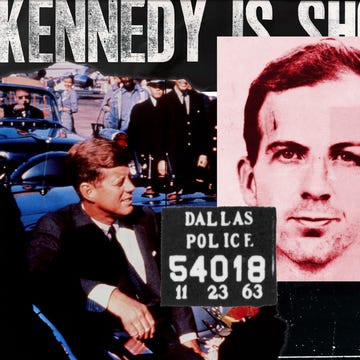
Who Killed JFK? You Won’t Believe Us Anyway

John F. Kennedy

Jimmy Carter
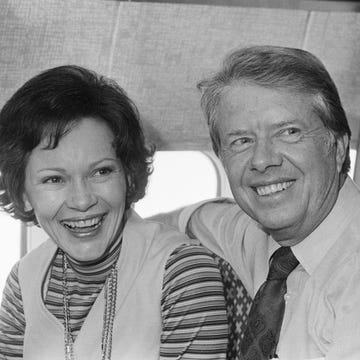
Inside Jimmy and Rosalynn Carter’s 77-Year Love

Abraham Lincoln
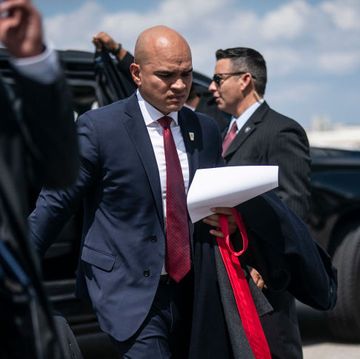
Who Is Walt Nauta, the Man Indicted with Trump?
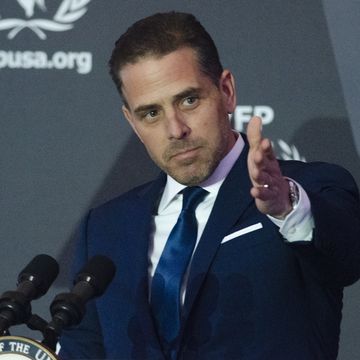
Hunter Biden and Other Presidential Problem Kids
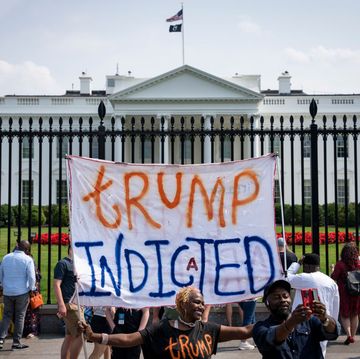
Controversial Judge Aileen Cannon Not Out Just Yet
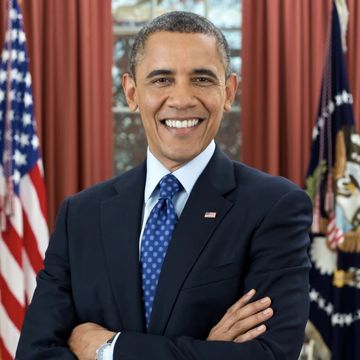
Barack Obama
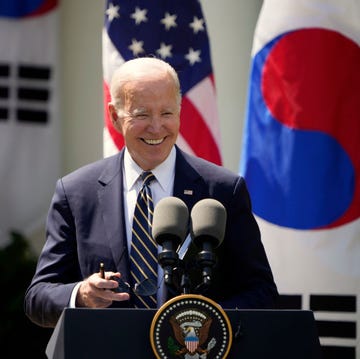
10 Celebrities the Same Age as President Joe Biden
Shiels: George H.W. Bush’s travels and character revealed in presidential books

Jean Becker spent 25 years as chief of staff for the late former President George H.W. Bush after he left the White House. She was a USA Today reporter who met Bush’s wife Barbara while editing a column for her during the 1988 campaign. After the election, Becker accepted a position in the First Lady’s press office during the president’s four-year tenure.
Becker’s devotion to the Bushes never ended, even to this day. She has published her second book celebrating the Bush legacy: “Character Matters…and other Life Lessons from George H.W. Bush.”
Becker’s first book: “The Man I Knew,” was her memoir of serving, which meant keeping up, with former President Bush.
“The man was the most energetic, outgoing person any of us ever knew,” Becker said. The fun, frenetic activity was also evidenced in the book I co-authored for President Bush’s golf professional and fishing buddy Ken Raynor, titled “I Call Him Mr. President – Stories of Golf Fishing and Life with my Friend George H.W. Bush.” Raynor’s book recounts Bushes trips to destinations such as St. Andrews, Scotland; the Arctic Circle; Puerto Rico; a cruise through the Greek Isles; and various PGA Tour events.
Becker worked closely with the busy President Bush, therefore she needed to spend summers in Maine and winters in Houston, where the Bushes lived in the Tanglewood neighborhood – where, just as in Kennebunkport, they received friends, celebrities and world leaders when they weren’t on the move.
Former British Prime Minister John Major is one of those who contributed a story for Becker’s “Character Matters.” I once spotted him walking through the George H.W. Bush Library and Museum, the tourist destination in College Station, Texas, near Houston, where the former President and First Lady are laid to rest. Presidential vehicles are on display, including “Fidelity,” one of the speedboats Bush piloted around the Atlantic off Walkers Point, his Kennebunkport, Maine compound of homes, a site which also draws tourists.
Russian President Vladimir Putin visited the #43rd President George W. Bush – and therefore his father, the #41st President – at Walker’s Point, Becker recalled wistfully with a joke.
“We were standing on the pier with the Atlantic Ocean right behind us. If I knew then what I know now, how easy it would have been to ‘accidentally’ push Putin into the ocean. Think of all the lives I could have saved! But I probably would have been shot.”
She revealed Putin and his Russian team were hosted in one of the Bush family homes on Walker’s Point called The Bungalow. “After they left, Mrs. Bush called the staff in to see they had totally trashed the house. There was a rotting fish in the kitchen and cigarette butts and, not to continue a stereotype: a lot of empty vodka bottles.”
Becker says President Joe Biden and Bush were friends. Bush planned to catch up with then vice-president Biden with a courtesy call to his hotel during a Biden trip to Houston – Bush’s hometown. The humble Bush squawked when Biden, mortified, respectfully suggested, though an aide, that protocol dictated he travel to former Bush’s home or office to greet him, a former president – not the other way around.
Becker says the humble Bush, in a phone call, told Biden’s nervous aide: “Here’s the problem young man. The vice-president has a motorcade that won’t even fit into my neighborhood. I have a two-car motorcade. This is logistics. I will go call on the vice-president, and you tell Joe that I said to ‘calm down.’”
Contact Michael Patrick Shiels at [email protected] His new book: Travel Tattler – Not So Torrid Tales, may be purchased via Amazon.com and his radio show is weekdays from 9-noon on WJIM AM 1240

George HW Bush: The U.S. Navy's Best Nimitz-Class Aircraft Carrier Ever
Summary: The USS George H.W. Bush (CVN-77), the final Nimitz-class aircraft carrier, represents a century of U.S. naval aviation since the commissioning of the USS Langley in 1922.
-With advanced radar and a distinct radar tower positioning, it enhances stealth capabilities. Hosting up to 56 aircraft and 15 helicopters, it launches planes every 20 seconds.
-Powered by two nuclear reactors, it achieves speeds of 30 knots.
-Despite undergoing extensive maintenance, the carrier exemplifies modern naval power and is expected to serve into the 2050s.
Nimitz-Class Carrier USS George H.W. Bush: A Legacy of Naval Power
Can you believe that it has been a hundred years since the first U.S. Navy aircraft carrier?
The USS George H.W. Bush – the last ship of the Nimitz-class carrier line – held a commemoration to celebrate one hundred years of carriers back in 2022. In March 1922, the USS Langley was commissioned as the first Navy carrier.
The Langley didn’t make it past World War Two – it was attacked and mortally wounded by the Japanese in 1942- and later scuttled by the Americans. However, George H.W. Bush exemplifies naval aviation and is considered one of the most powerful ships in the world.
What Was the Original Idea Behind the Aircraft Carrier?
Carrier aviation has come a long way since the Langley was commissioned.
“The idea back then was just experimental. How can we harness air power at sea to give us control of the seas as well as control of the air,” said Vice Admiral Kenneth Whitesell , commander of naval air forces, according to WAVY News in Norfolk, Virginia. “The impressive nature of how we have evolved over the 100 years now turns us into a formidable war platform,” Whitesell said.
USS George H.W. Bush - A Busy Airport on the Sea
The USS George H.W. Bush is a floating city with 6,000-sailors and marines. The aircrew alone has a crew of 160-officers and 2,500 sailors. The ship even has its own post office. George H.W. Bush is 1,092 feet and long displaces over 100,000 tons, making it one of the world’s largest naval ships.
The Bush has a different shape with a radar tower that is located in another position compared to other carriers in the Nimitz-class. These changes have made it more likely to evade enemy radar.
An Impressive Fleet of Aircraft
It can carry 56-airplanes including the F/A-18A/C and F/A-18E/F Super Hornets, the EA-6B Prowler, and the E-2C Hawkeye.
Up to 15 helicopters are on board such as the Sikorsky SH-60F, HH-60H Seahawk, and SH-60B Seahawk.
It has four C13-2 steam catapults and three mk7 mod 3-type arrester cables so the carrier can launch and recover aircraft quickly.
An aircraft can launch once every 20-seconds.
USS George H.W. Bush - Weapons and Nuclear-power
The carrier comes with a full complement of sea-launched missiles including antiaircraft weapons and a close-in weapon system to fight off enemy cruise missiles .
It’s about three football fields long. Two nuclear-powered reactors provide propulsion to four turbines and four shafts for a top speed of 30-knots. It has five different kinds of radar and sensors on board.
The USS George H.W. Bush was commissioned in 2009 and the navy hopes it can serve into the 2050s. The Bush has been instrumental in the war on terror as its airplanes have bombed ISIS positions in the Middle East since 2014.
It Does Take Substantial Amounts of Maintenance
The $6.5 billion carrier endured 30-months of maintenance that began in 2019 in Norfolk, and it was ready for missions again in the summer of 2021. The long period had to do with Covid-19 and additional required work on submarines in Norfolk.
Technicians worked to modernize and maintain the Bush with shaft and propeller overhauls plus rudder refurbishment. That job required an amazing 1.3 million man days of work. It got a clean bill of health after the drydocking.
USS George H.W. Bush is the epitome of combat power. Carriers are immensely valuable to the United States Navy despite these long maintenance periods. The Bush exemplifies 100-years of aircraft carrier history, and it will still make positive headlines as it extends its service life.
The Bush’s call sign is “Avenger,” named after the kind of airplane that the president flew in World War Two. That is an apt nickname for this formidable carrier.
About the Author
Brent M. Eastwood , PhD, is the author of Humans, Machines, and Data: Future Trends in Warfare . He is an Emerging Threats expert and former U.S. Army Infantry officer. You can follow him on Twitter @BMEastwood .
All images are Creative Commons.


IMAGES
VIDEO
COMMENTS
George H.W. Bush was the 41st President of the United States and served as vice president under Ronald Reagan. He was also the father of George W. Bush, the 43rd President. Updated: Oct 17, 2019
In fact, George H. W. and George W. are only the second set of father and son to become President. (John Adams and John Quincy Adams were the first.) Bush was born and raised in New England in a wealthy family. His parents valued hard work and public service and were strong influences in his life. He was educated at Phillips Academy Andover ...
George H. W. Bush. George Herbert Walker Bush [a] (June 12, 1924 - November 30, 2018) was an American politician, diplomat, and businessman who served as the 41st president of the United States from 1989 to 1993. [2] A member of the Republican Party, he also served as the 43rd vice president from 1981 to 1989 under Ronald Reagan, and in ...
George H. W. Bush, Forty-First President of the United States. George Herbert Walker Bush (1924-2018) was the 41st President of the United States. He was born on June 12, 1924, in Milton, Massachusetts. He was an oil businessman and politician who served as Texas Congressman, Ambassador to the United Nations, CIA director, Vice President, and ...
Born in 1924 to a prominent New England family, George Herbert Walker Bush enjoyed a privileged childhood and a close-knit family. Later in life, Bush would say, "Family is not a neutral word for ...
George H.W. Bush, (born June 12, 1924, Milton, Mass., U.S.—died Nov. 30, 2018, Houston, Texas), 41st president of the U.S. (1989-93).Bush was the son of Prescott Bush, an investment banker and U.S. senator from Connecticut. He served in World War II as a torpedo bomber pilot on aircraft carriers in the Pacific, flying some 58 combat missions; he was shot down by the Japanese in 1944.
Born on June 12, 1924, in Milton, Mass., George Bush became a decorated naval pilot who flew torpedo bombers during World War II. He was shot down on September 2, 1944 while completing a mission over Chi Chi Jima Island and, tragically, lost his two crewmen William "Ted" White and John Delaney. By the time he was honorably discharged in ...
The biography for President Bush and past presidents is courtesy of the White House Historical Association. George H. W. Bush, as the 41st President (1989-1993), brought to the White House a ...
George Herbert Walker Bush belongs to a political dynasty; he sits in the middle of three generations of politicians, including his father Prescott, a senator from Connecticut; his son Jeb, former governor of Florida; and his son, George Walker, the 43rd President of the United States. In fact, George H. W. and George W. are only the second set ...
George H. W. Bush brought to the White House a wish to make the United States "a kinder and gentler nation.". Coming from a family with a tradition of public service, George Herbert Walker Bush felt the responsibility to make his contribution both in time of war and in peace. Born in Milton, Massachusetts, on June 12, 1924, he became a ...
Personal Life & Legacy. George H. W. Bush married Barbara Pierce in 1945 and the couple had six children, namely, George W. Bush, Robin Bush, Jeb Bush, Neil Bush, Marvin P. Bush and Dorothy Bush Koch. George H. W. Bush and Barbara Bush were married for 73 years till the death of Barbara Bush on April 17, 2018.
LULU GARCIA-NAVARRO, HOST: We're remembering the life of George H.W. Bush this morning. The 41st president died Friday evening. He's remembered as a president, the father of a president, and a ...
This publication contains a short biography of every member of Congress from 1774 to the present, including George H. W. Bush, who served in the House of Representatives in the 90th and 91st Congresses (January 3, 1967-January 3, 1971). George H.W. Bush Presidential Library and Museum is part of the Presidential Library system administered by ...
After serving two terms as vice president, George H.W. Bush became the 41st president of the United States in 1989. The main event of Bush's presidency was the Persian Gulf War .
Biography of President George W. Bush. George W. Bush is the 43rd President of the United States. He was sworn into office on January 20, 2001, re-elected on November 2, 2004, and sworn in for a second term on January 20, 2005. Prior to his Presidency, President Bush served for 6 years as the 46th Governor of the State of Texas, where he earned ...
George H.W. Bush - Cold War, Diplomacy, Leadership: Upon assuming office, Bush made a number of notable senior staff appointments, among them that of Gen. Colin Powell to chairman of the U.S. Joint Chiefs of Staff. His other important policy makers included James Baker as secretary of state and William Bennett as director of the Office of National Drug Control Policy.
President George H.W. Bush has died at the age of 94. We look back on his life and legacy. SCOTT SIMON, HOST: President George Herbert Walker Bush has died at his home in Houston. He was 94. The ...
In numerous ways, George H.W. Bush seems to have spent his life preparing for the presidency. A man of almost supernatural decency, Bush was the oldest-ever living president until his death thirty-eight days ago at the age of 94. (With fair winds and following seas, Jimmy Carter will inherit that title in just over ten….
George H.W. Bush served in office from 1989 to 1993, and John Adams and John Quincy Adams were both presidents in the early 1800s. ... After a number of short-term jobs, Bush landed a position with an oil company in the 1970s and eventually established his own energy company before going on to be part owner of the Texas Rangers baseball club ...
George Bush was the 41st President of the United States. Served as President: 1989-1993 Vice President: Dan Quayle Party: Republican Age at inauguration: 64 Born: June 12, 1924 in Milton, Massachusetts Died: November 30, 2018 (aged 94) Houston, Texas Married: Barbara Pierce Bush Children: George, Robin, John, Neil, Marvin, Dorothy Nickname: Poppy, Chief Spook ...
Bush was the eldest of six children of George H.W. Bush, who served as the 41st president of the United States (1989-93), and Barbara Bush.His paternal grandfather, Prescott Bush, was a U.S. senator from Connecticut (1952-63). The younger Bush grew up largely in Midland and Houston, Texas.From 1961 to 1964 he attended Phillips Academy in Andover, Massachusetts, the boarding school from ...
George H. W. Bush 's tenure as the 41st president of the United States began with his inauguration on January 20, 1989, and ended on January 20, 1993. Bush, a Republican from Texas and the incumbent vice president for two terms under President Ronald Reagan, took office following his victory over Democratic nominee Michael Dukakis in the 1988 ...
Born in July 6, 1946, in New Haven, Connecticut, George W. Bush was the 43rd president of the United States. He narrowly won the Electoral College vote in 2000, in one of the closest and most ...
Jean Becker spent 25 years as chief of staff for the late former President George H.W. Bush after he left the White House. She was a USA Today reporter who met Bush's wife Barbara while editing ...
USS George H.W. Bush - A Busy Airport on the Sea The USS George H.W. Bush is a floating city with 6,000-sailors and marines. The aircrew alone has a crew of 160-officers and 2,500 sailors.
There are over 25, 000 studies on the Bible, Marriage, Parenting, and more. Right now, also has an extensive catalog of professional development courses on leadership, team building, community, diversity, and conflict resolution. In fact, Baylor has made the full library, the video library available to all of our faculty and staff.